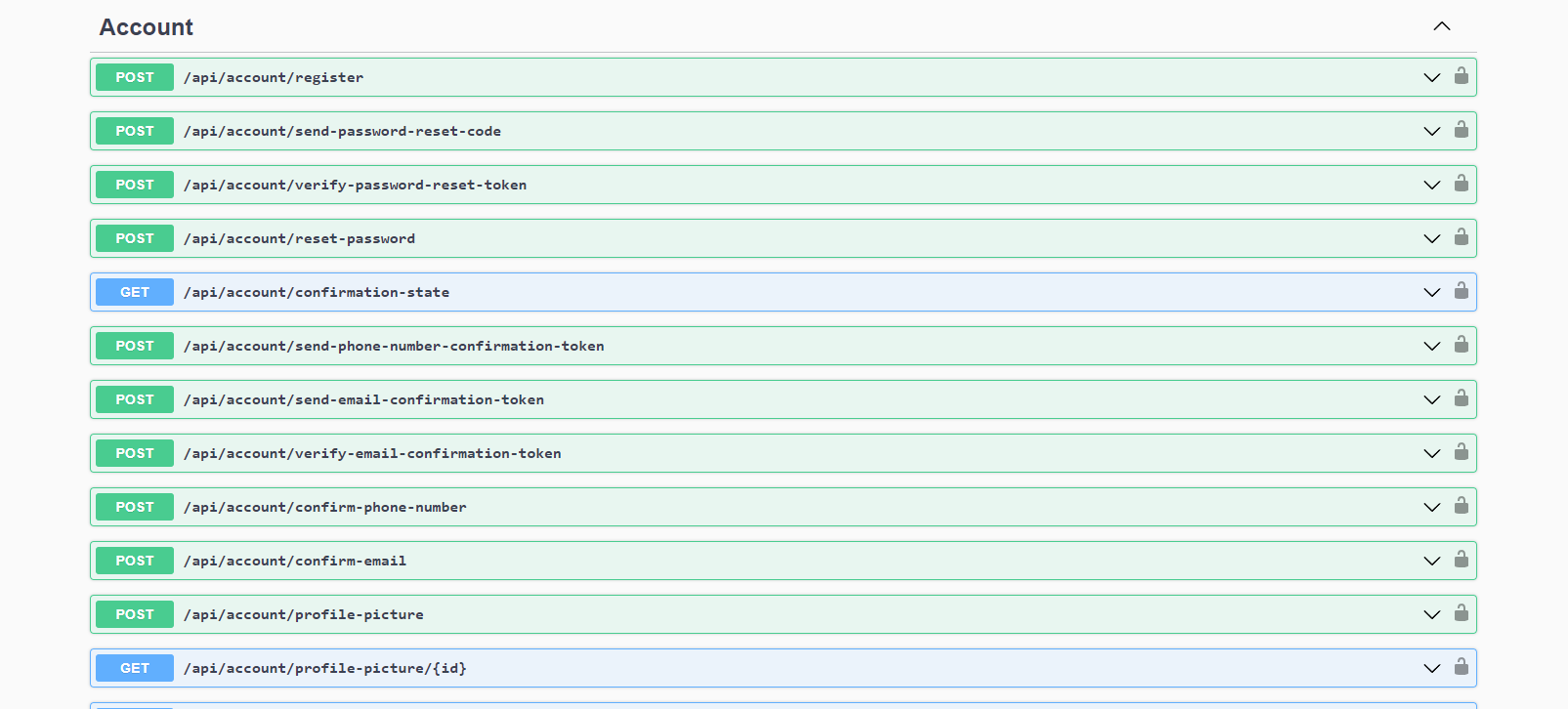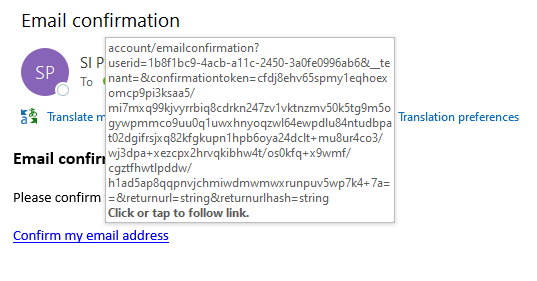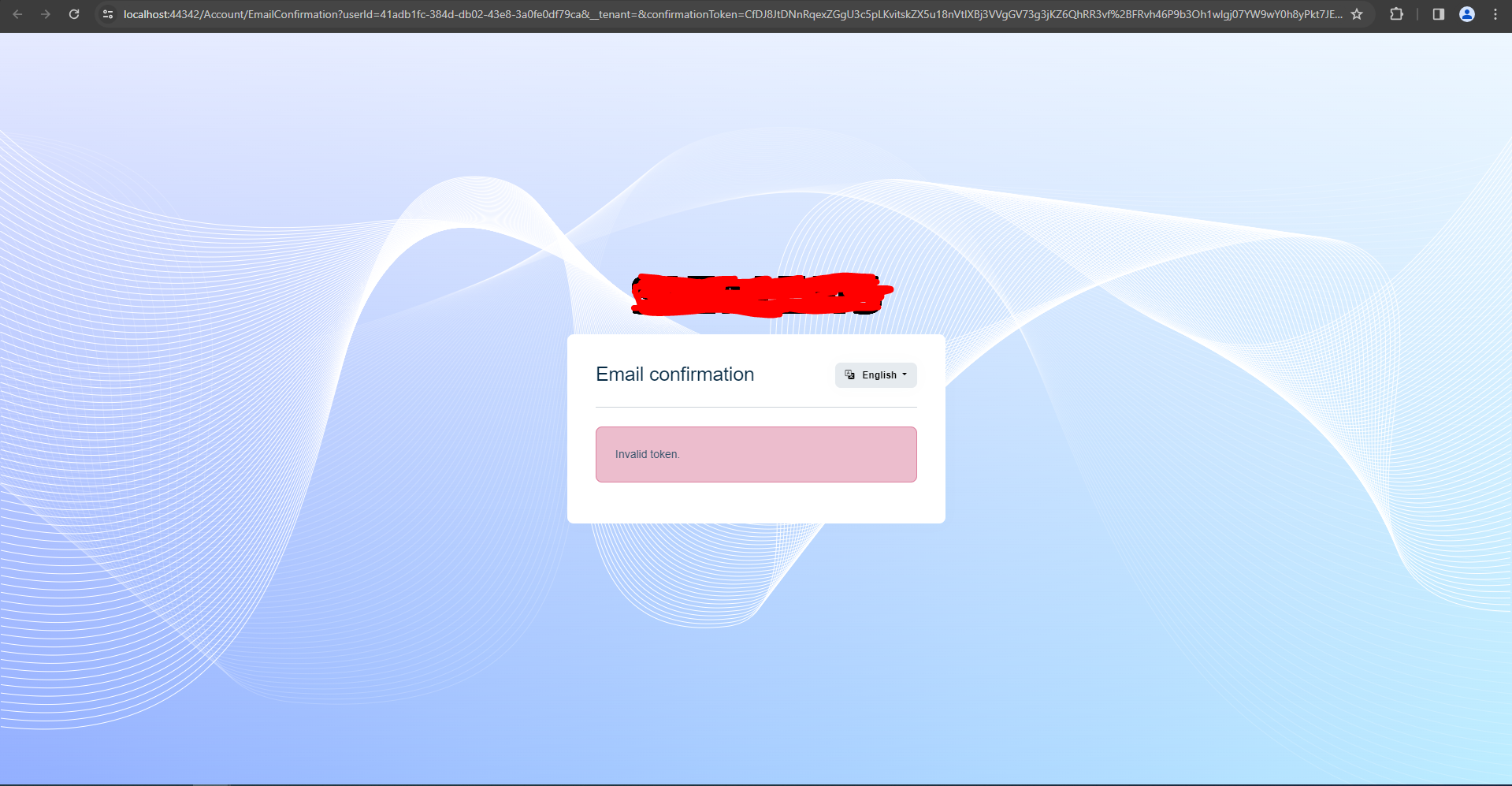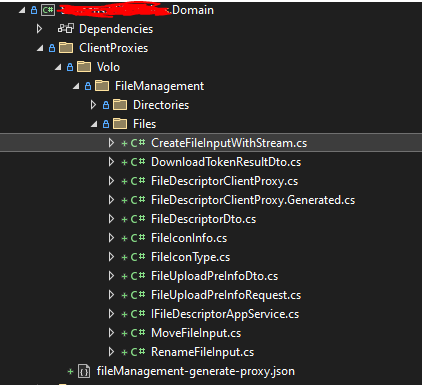I am running AuthServer, HttpApi.Host and Web.Host
I've sent it
Hello, After we upgraded ABP v8.1.1, we got "Tenant not found! There is no tenant with the tenant id or name: a3e378cf-c315-7b7e-da30-3a12881a6c2a" exception while trying to login the application via Web.Host project. We've been using the application without redis so we've disabled it.
"Redis": {
"IsEnabled": "false",
"Configuration": "127.0.0.1"
},
When we enable the redis, there is no problem. We are able to login. So I've decided creating a new module project on abp suite to test the same thing.

Hello, We want to change "entityTypeFullName" property on entity changes in audit logging module. I assume that it is retrieved from the namespace. We don't want to change the namespace for that. How we are going to change this value while adding the record?
Hello all,
We want to send an email confirmation token from Angular app and we want to use MVC keyword(AuthServer confirmation page) for that (not separate Angular UI). Before that, I've wanted to try it on HttpApi.Host. We've added Volo.Abp.Account.Pro.Public.HttpApi dependency in HttpApi module. I am able to see the endpoints on swagger UI
 After that, when we call the send-email-confirmation-token from the HttpApi.Host, I see that there is empty url in the email.
After that, when we call the send-email-confirmation-token from the HttpApi.Host, I see that there is empty url in the email.

 To achieve that problem, I've added the AbpUrlOptions to HttpApi.Host module to set the RoorUrl for "MVC" keyword and give the AuthServer url since email confirmation page is here. Swagger authority is set as AuthServer url.
To achieve that problem, I've added the AbpUrlOptions to HttpApi.Host module to set the RoorUrl for "MVC" keyword and give the AuthServer url since email confirmation page is here. Swagger authority is set as AuthServer url.
 When I try it on my local, everything works fine but it does not work for the docker containers. I get the error invalid token even though the link is correct.
When I try it on my local, everything works fine but it does not work for the docker containers. I get the error invalid token even though the link is correct.

How can I solve that problem?
Is using the client credentials flow suggested if I want to use the remote service in the background job?
Hello,
As I've mentioned here , I call the file management app service, which is implemented on AuthService as if it is a microservice, on my domain service by using remote service call. I use static proxy scripts to achieve that. When I call it, I get an authorization error since we don't have httpContext access on background job. I implement AbpHttpClientIdentityModelWebModule on HttpApi.Host to pass the current token to authorization header (not using the AbpHttpClientIdentityModelModule with client_credentials flow)
Here is the part of my domain service method (ExportAsBaseModelAsync) which uses fileDescriptorAppService:

Here is the error log on HttpApi.Host and AuthServer


How can I send the request behalf of the user with current token? Is there a way to do that magically like ApplicationService methods?
Hello again,
When I run the command abp generate-proxy -t csharp -u http://localhost:53929/ -m fileManagement in domain layer, I can see that files generated
 But the project gives compile error since there are missing packages regarding application service. For example:
But the project gives compile error since there are missing packages regarding application service. For example:

I guess adding the Volo.Abp.Application.Services package is not a right way to do it. How to resolve that?
Okay. Thanks for suggestions
Okay, I got it. Besides its functionality, we don't want to generate the proxy scripts when every time code changes. When I examine here, we think that X ABP module is an external API and Y module shouldn't work without X module service (at least on some business logics). We know that there is a dependency issue. Let's say that I have a business logic that should run with X module API and I need to call it in domain service. I think Y.Domain like a client application and we can reference HttpApi.Client layer on Y.Domain layer since we run a business logic by using X module API.
Do we violate the rules in terms of DDD by giving the X.HttpApi.Client reference to Y.Domain or is it a basically dependency issue that we should think about?

